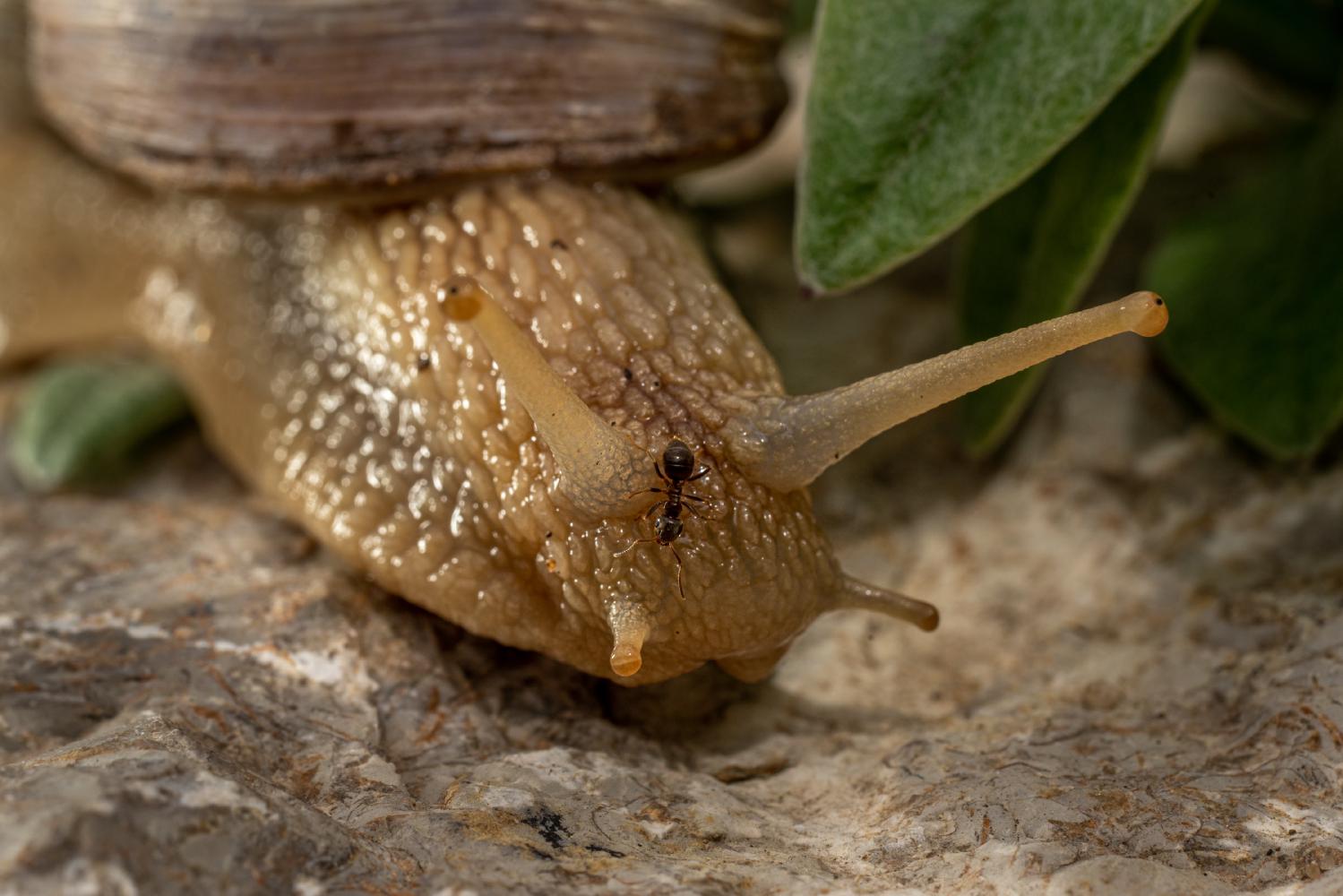Helix Snails
Lat. “Helicidae“
family
infraclass
“Pulmonata“
1 family, 2 species
The family Helicidae consists of shells that are usually flattened or depressed conical, with some species having globular or cylindrical shells. The shells in certain genera, such as Cepaea, are brightly colored and patterned. Helicidae have distinct anatomical characteristics, including a ribbed jaw and specific reproductive structures. The number of haploid chromosomes in this family ranges from 22 to 30. Helicids are primarily distributed from the Caucasus through Europe to North Africa, but some species are found on islands like Cape Verde and the Canary Islands. Additionally, some helicids have been introduced and established in various locations worldwide. The family Helicidae is further categorized into three subfamilies based on molecular phylogenetic analysis.
Hierarchy
Shell description
The shells are usually flattened or depressed conical. Globular shells are found in the genera Helix, Maltzanella, Lindholmia, Cornu, Cantareus, Eremina, and Idiomella. One species, Cylindrus obtusus, has a cylindrical shell. In some genera, especially in Cepaea, the shells are brightly colored and patterned.
Anatomy
Helicidae typically have a ribbed jaw, bursa copulatrix with a diverticulum, and one dart sac accompanied by a pair of (usually) branched, tubular mucous glands inserting at the base of the dart sac.
Genetics
In this family, the number of haploid chromosomes lies between 22 and 30.In the “Darwin Tree of Life”." project, four species (Cepaea nemoralis, Cepaea hortensis, Cornu aspersum, and Arianta arbustorum) are scheduled for whole genome sequencing and assembly (“Data portal”.).
Distribution
The core of helicids is distributed in from the Caucasus through Turkey and Europe to North Africa. However, some genera or species live beyond these limits. Helicids occur on Cape Verde (Eremina), Canary Islands (Theba, Hemicycla) and the Madeira Archipelago (Lampadia, Idiomela). Levantina extends far south in western Arabia, and Eremina desertella is distributed as south as Sudan, Eritrea and Puntland in Somalia. Cepaea hortensis lives on Iceland and in a small area in eastern Canada. Some species, notably Cornu aspersum and Theba pisana have been introduced and become established in numerous different areas worldwide.
Taxonomy
The family Helicidae contains 3 subfamilies (according to molecular phylogenetic analyses):
References
== External links ==
Ancestry Graph
Further Information
Copyright

This article uses material from the Wikipedia article Helicidae the free encyclopedia Wikipedia which is released under Creative Commons Attribution-ShareAlike 4.0 International License). On Wikipedia a list of authors is available.
